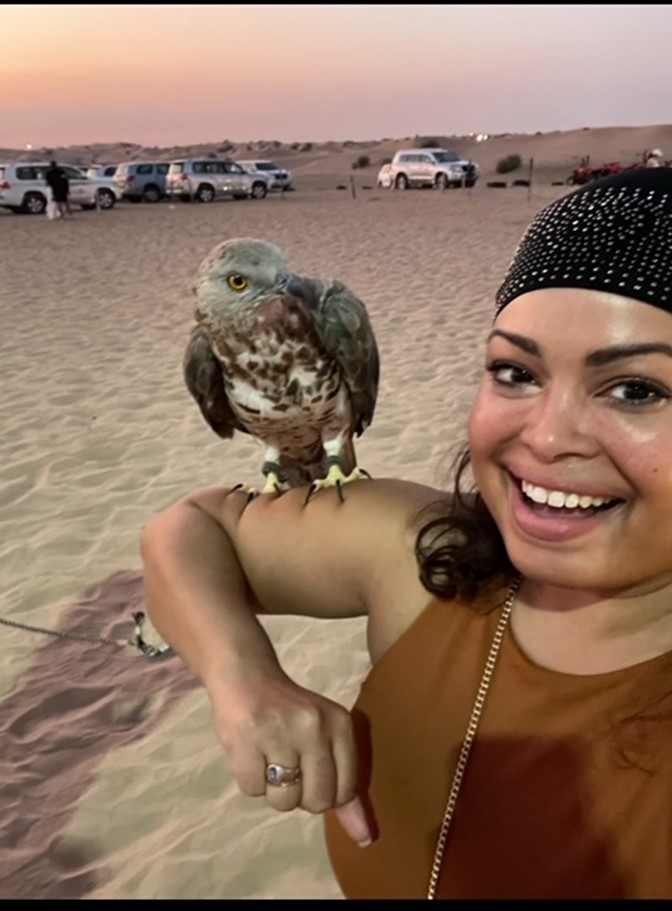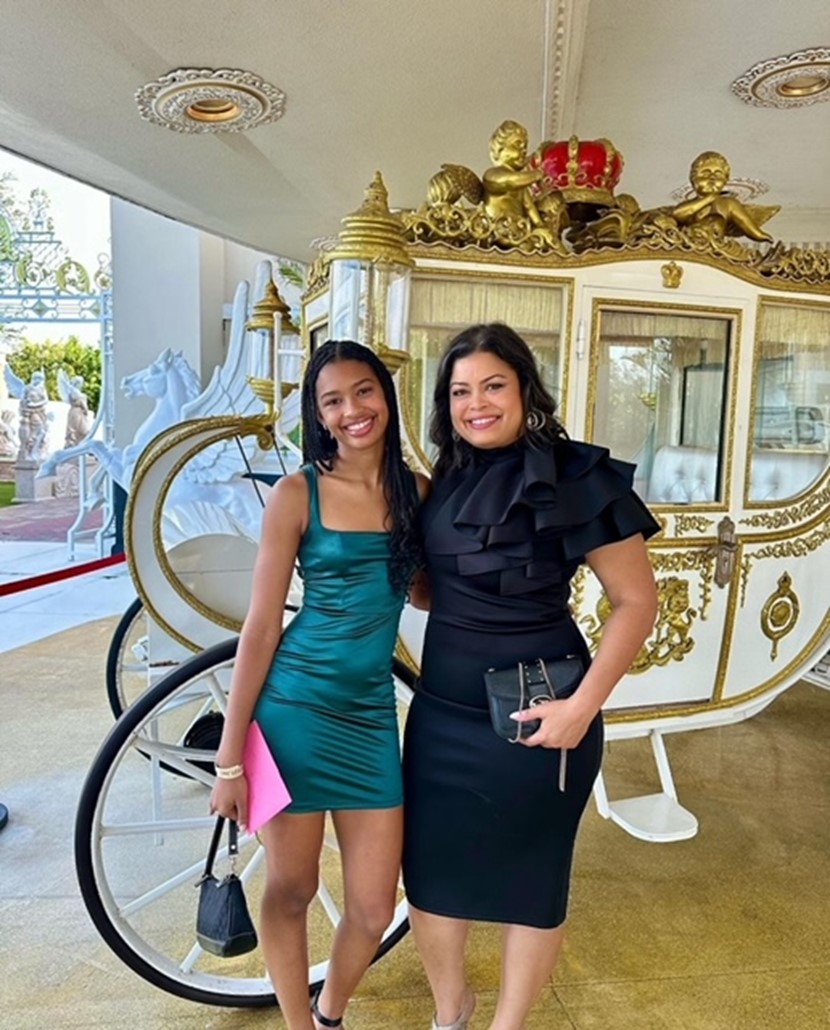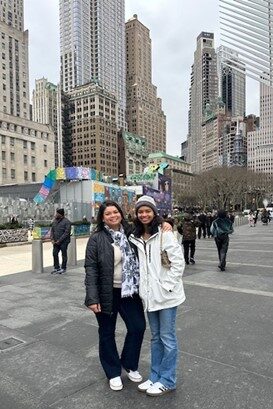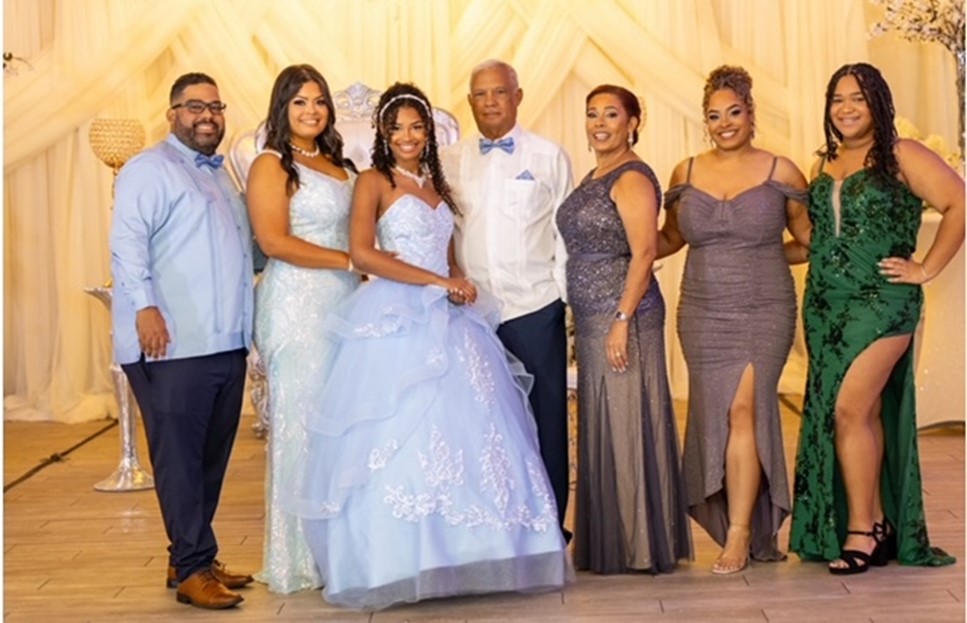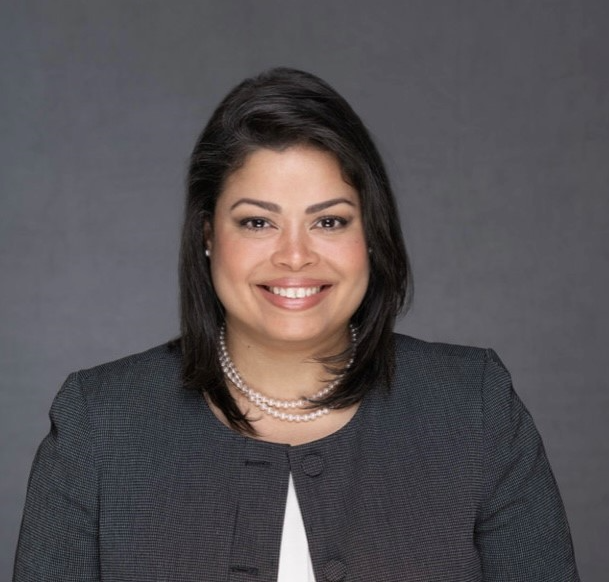Diana Wright: Navigating Language Barriers with Empathy
“A lot of us live in a bubble, sharing the majority of the time with people in our own community. Hispanic Heritage Month is a great time to get involved and connect with people who may not look or sound like you. That connection with other cultures breaks down the stereotypes and stigmas that divide us.”
Diana Wright was six years old when her family moved to the United States from the Dominican Republic.
“I grew up with the best of both worlds, speaking Spanish at home and English at school,” Diana said. “Being bilingual has always been important to me as it helps me connect to more people. I’m fortunate that I was able to learn both languages as a young girl, and it’s important to uplift those who don’t have the same privilege. My parents are still at times treated differently or discounted because they speak English with a heavy accent. This is the reality for many immigrants that are trying to assimilate to a new culture and language.”
With an educational background in facilities engineering and doctorate in educational leadership and policy, Diana joined McKinstry in 2023 as operations director, Technical Services, leading the Active Ops program in Tampa, Florida.
“My experience and education have taught me how to solve complex organizational challenges and address the built environment in a holistic way,” Diana said. “This is key to understanding how systems work and how our decisions impact the people who occupy and operate the spaces within them.”
In her current role, Diana partners with a local school district to oversee building performance. “Our ActiveOps program is revolutionizing the market by enabling organizations to make strategic decisions through a comprehensive approach focused on streamlining operations and increasing efficiency,” Diana said.
When describing her daily work, Diana states “No two days are alike.” “I can have a well-planned week, but if something happens at one of the facilities, everything shifts so we can prioritize that issue and solve it. It requires a lot of flexibility, collaboration, and great teamwork. I’m always thinking about how we can improve and take things to the next level.”
With nearly 38% of Diana’s primary district client’s student body identifying as Hispanic or Latino, part of Diana’s continuous-improvement focus is on effective communication. She wants to ensure that key stakeholders understand how they can make a positive impact in increasing energy efficiency. During the summer session, custodians are the main occupants in school buildings as they work to sanitize and prepare classrooms for students to return.
Since many of the district’s custodians are native Spanish speakers, Diana collaborated with her powerED team to translate the informational sessions from English to Spanish. The training provided information on energy-savings measures that would be implemented over the summer downtime.
“We needed their help to make this initiative successful, and we had to remove potential roadblocks to ensure buy-in,” said Diana. More than 41 million people in the U.S. speak Spanish as a first language, and though many people know English as a second language, proficiency varies from person-to-person. When unaddressed, language barriers can lead to miscommunication, inefficiency, and more problems down the road.
“Learning a second language can be intimidating,” Diana said. “When speaking people feel the need to be perfect and get embarrassed when they make mistakes. This at times may lead to people hesitating to ask important questions during a training or informational session.”
This new format received enthusiastic support from her client, colleagues, and stakeholders. Though translating materials and preparing sessions in more than one language required additional work, the reaction she received from stakeholders was worth it.
“We had originally scheduled three informational sessions in Spanish, but we ended up doubling the number of sessions because of demand,” Diana said. “I wasn’t expecting that. Our training team shifted quickly to add my teammate, Maria Meier, who partnered with me to facilitate more sessions in Spanish and the powerED team Nicole Cook and Megan Esposita made sure everyone’s computer needs were met. It was a true team effort.”
Hosting sessions in Spanish opened the door for candid communication, providing a safe space for attendees to ask questions and share struggles they were facing in their facilities.
“Hosting it in this format resulted in valuable conversations and important issues were brought to our attention,” Diana said. “The custodians are at these facilities every day, so getting to connect with them directly was so important to understanding their needs. We received great feedback and developed new relationships that will lay the groundwork for smoother operations in the future.”
Allyship Beyond Hispanic Heritage Month
Over 60 million people in the U.S. identify as Hispanic or Latino. Hispanic Heritage Month, celebrated every year from September 15 to October 15, honors the contributions and cultures of Americans with Hispanic or Latin American heritage. The holiday originated in 1968 as Hispanic Heritage Week and transitioned to a month-long celebration in 1988, split across two months to align with several Hispanic and Latino independence days and celebrations.
“I feel like I celebrate Hispanic Heritage Month every day,” Diana said. “My family is always looking for opportunities to celebrate and support each other through the good and bad. We love getting together and gatherings typically occur with lively music, dancing, laughter, and amazing food.”
Many communities host events for Hispanic Heritage Month, from concerts and performances to festivals and cookouts.
“A lot of us live in a bubble, sharing the majority of the time with people in our own community,” Diana said. “Hispanic Heritage Month is a great time to get involved and connect with people who may not look or sound like you. That connection with other cultures breaks down the stereotypes and stigmas that divide us.”
Though not everyone knows a second language, there are opportunities to help break language barriers and make sure information is shared equitably.
“Knowing your audience is key,” Diana said. “If I’m delivering communication to a team that would benefit from receiving information in a language other than English, I partner with an ally who can help me translate or review material generated by translation software. It just takes a few extra steps, and it can make a huge difference.”
